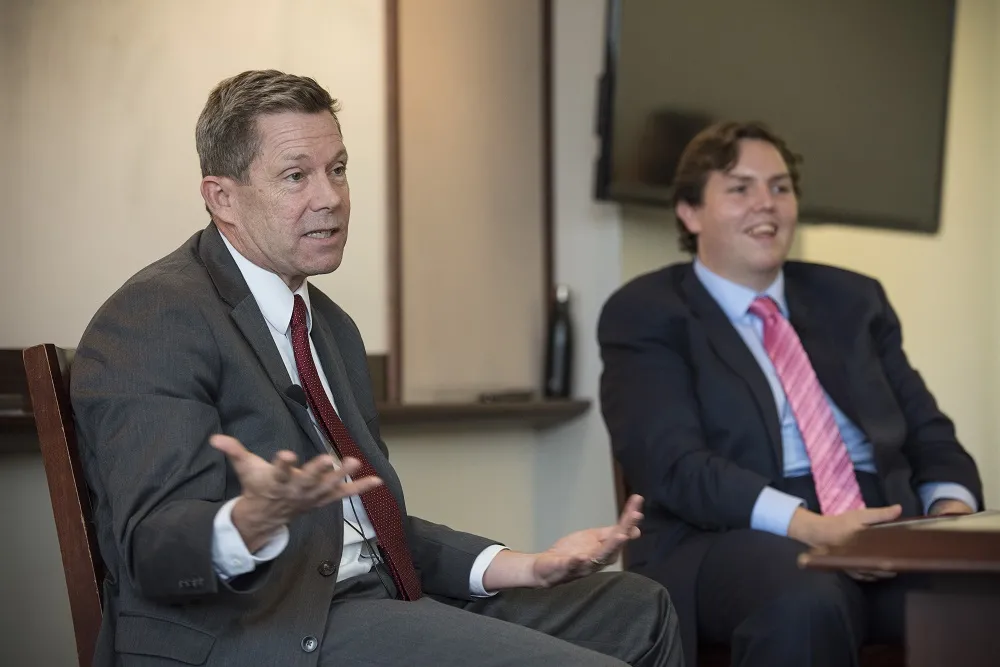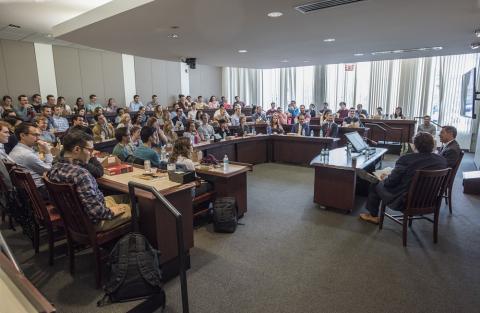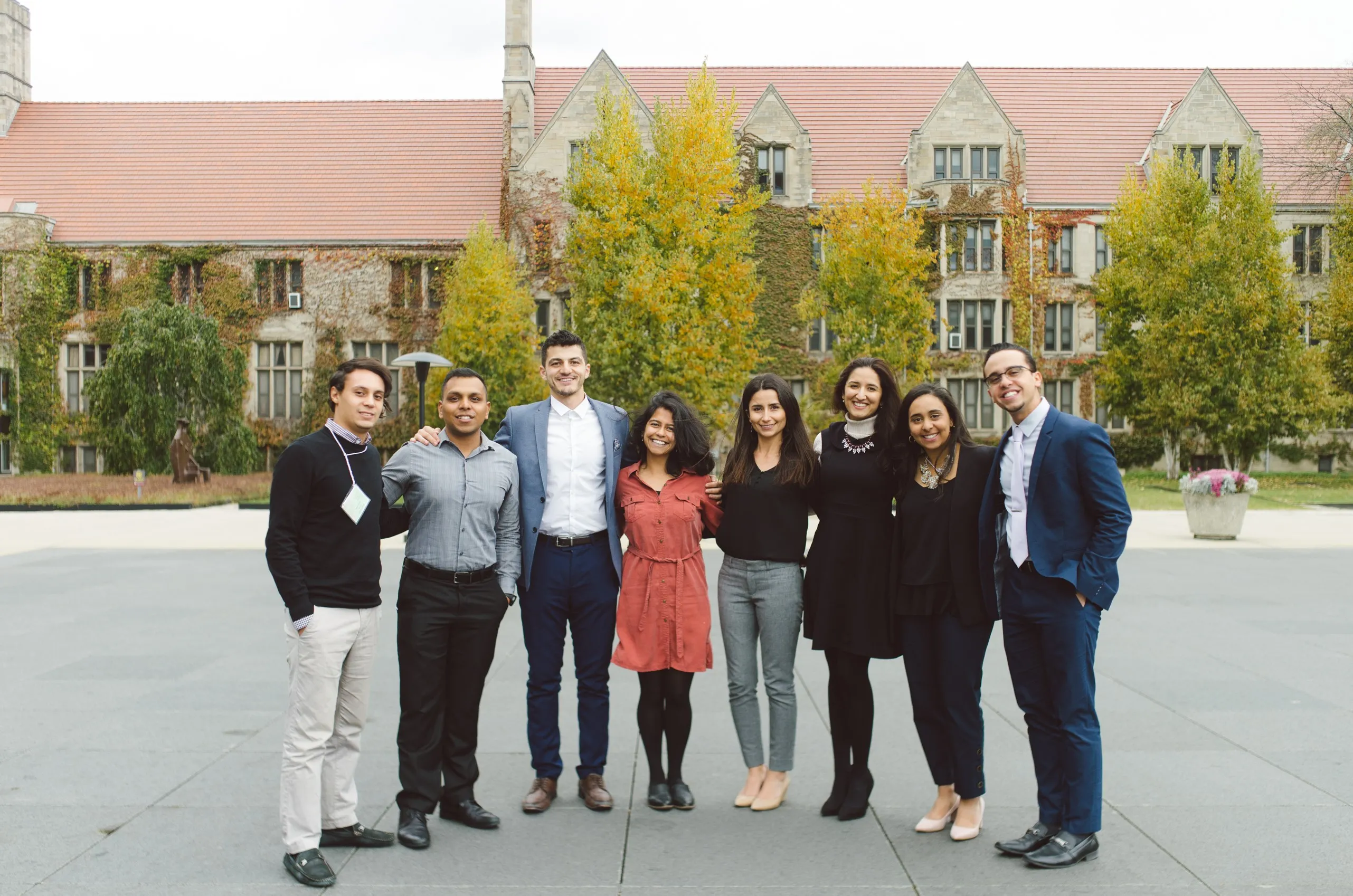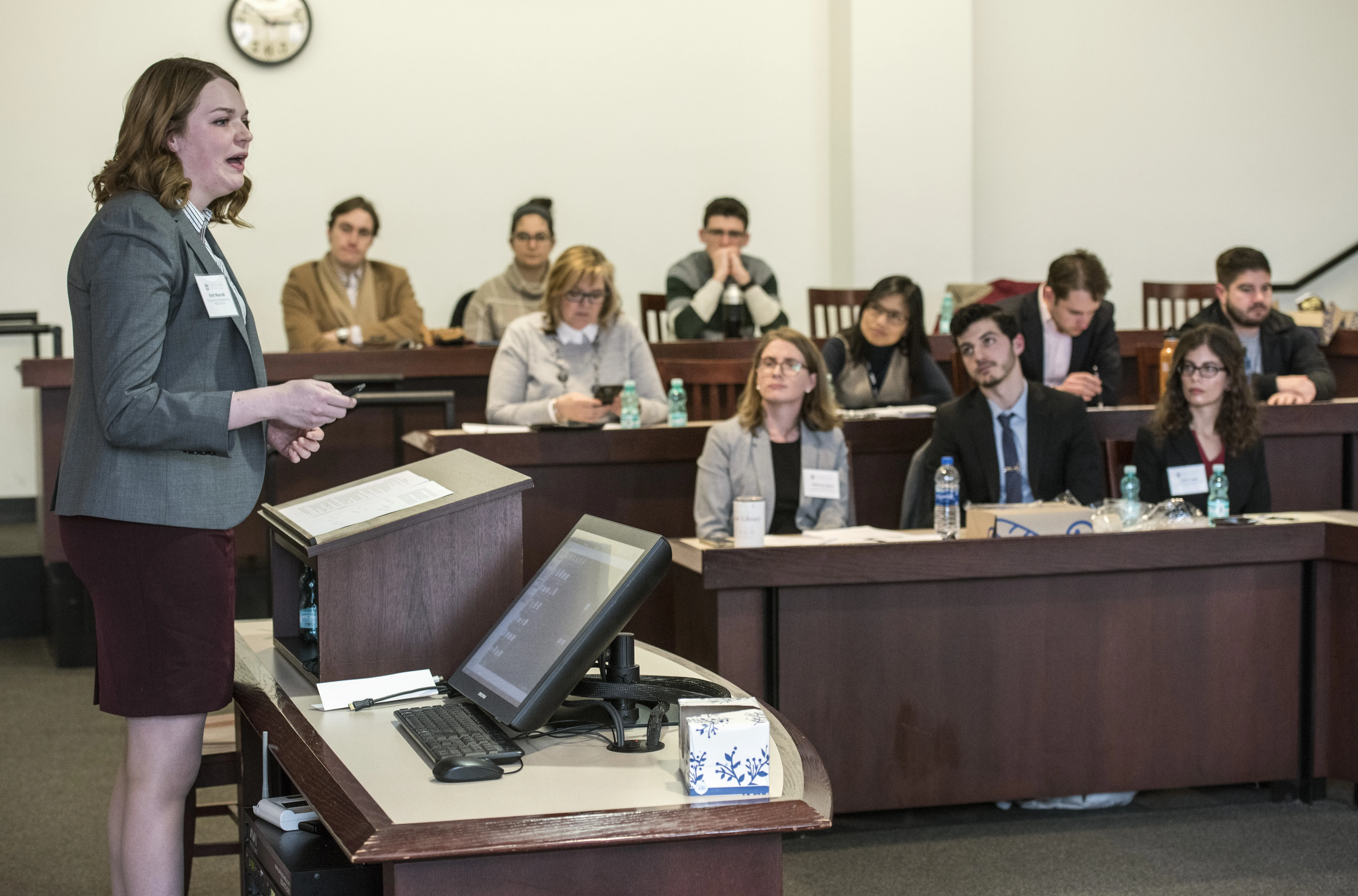Sixth Circuit Judge Explores “Imperfect” Approach to Constitutional Law

Judge Jeffrey S. Sutton of the United States Court of Appeals for the Sixth Circuit wants to change how scholars and judges approach American constitutional law. After more than a century of almost exclusive focus on the United States Constitution and federal courts—and bitter national battles over the state of the US Supreme Court—Sutton wants the public to turn its attention to the state courts and the role they can play in advancing important rights, an argument he makes in his new book, 51 Imperfect Solutions: States and the Making of American Constitutional Law.
He knows he has his work cut out for him.
“It may be a little dreamy and hopeful, I get it,” Sutton told Law School students in October in an Edward H. Levi Distinguished Visiting Jurist talk that was moderated by Professor William Baude. “In one sense, some of the intensity of the confirmation process can by justified based on the power the US Supreme Court is exercising.”
“But what might be helpful is a détente at the US Supreme Court when it comes to rights innovation, a development that may be more palatable if state courts are more engaged in the interpretations of their constitutions,” he said.
In his book, Sutton urges a return to federalist thinking, arguing that people should resist the tendency to think “invariably of states as villains when it comes to rights protection.” The academic and political elevation of federal courts and the federal Constitution means that the stakes are always higher in federal disputes, Sutton said. Thus, he argues, state courts and state constitutions present opportunities to make incremental policy changes and fill gaps in the law left by federal courts.
Part of the inspiration for this argument—and for his book—comes from Sutton’s tenure as the Solicitor General of Ohio. While in that position, Sutton witnessed firsthand the “role that state courts might play in education.”
Following the Supreme Court’s 1973 decision in San Antonio Independent School District v. Rodriguez, where the Court held that absolute equality of funding in state education systems is not required under the Equal Protection Clause of the Fourteenth Amendment, many states took it upon themselves to reduce funding disparities between rich and poor school districts. Since Rodriguez, three-fourths of state supreme courts have ruled in favor of the very relief that the Supreme Court denied in 1973. Sutton sees this as a success story of states responding effectively to obstacles at the federal level.
“In my view, while it is difficult to prove, I doubt that a victory at the US Supreme Court in 1973 (for Rodriguez) would have been healthy for the cause of equal funding,” Sutton said. “It’s counterintuitive, but if the US Supreme Court had gone down that road, it would have been monitoring thousands of local school systems and likely would have limited its authority to adopt appropriate national remedies and remedies customized to specific school districts.”
But because the Supreme Court denied the relief Rodriguez sought, “state courts really filled a substantial gap left by the Supreme Court, and they relied on their state constitutions in doing this,” he said. In Sutton’s home state, he suspected that “the state court decision got more out of the Ohio legislature than any US Supreme Court decision could have” because it provided “customized remedies to the circumstances of that state.”
Those state constitutions lack the uniformity of the United States Constitution, which can create regional differences between state courts. But Sutton urged the audience to embrace the quirks of state constitutions as a framework for understanding a different approach to constitutional law.
“I could carry the US Constitution in my pocket, but the California constitution would take six backpacks,” Sutton said. “A lot of state constitutions look like yard sales with things you should never have bought in the first place. But a lot of the idiosyncratic provisions [of state constitutions] actually have a history and a point to them.”
Sutton detailed one of the idiosyncrasies in New York’s constitution, which explicitly requires the maintenance of ski trails of a certain width in the Adirondack Mountains. Rather than being a random provision slipped into a state constitution, Sutton said, this measure actually comported with the state’s decision to conserve certain state-protected land through its own constitution.
Ultimately, Sutton said, state constitutions and state courts can play a role in addressing constitutional challenges and potentially lowering the stakes associated with federal constitutional law.
Emily Snoddon ’20, who attended the talk, left feeling hopeful about these ideas.
“I appreciated the judge’s ideas to find a solution to current issues with the politicization of the court,” Snoddon said. “I’m curious to see how his state-focused approach could work.”




